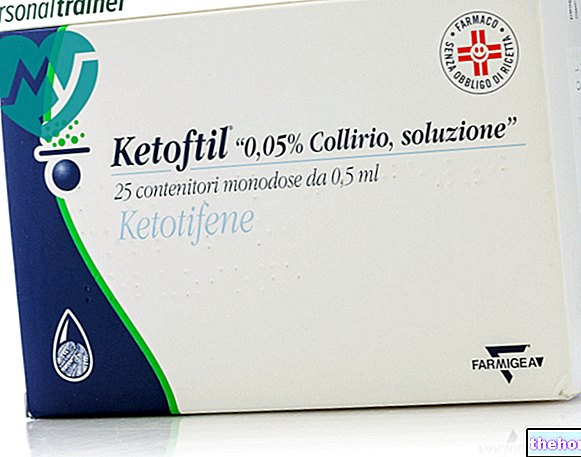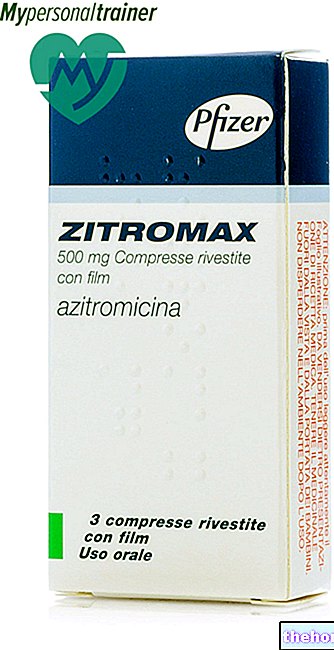Active ingredients: Rifamycin
RIFOCIN 250 mg / 3 ml solution for injection for intramuscular use
RIFOCIN 250 mg / 10 ml solution for injection for intravenous use
RIFOCIN 500 mg / 10 ml solution for injection for intravenous use
Rifocin package inserts are available for pack sizes: - RIFOCIN 250 mg / 3 ml solution for injection for intramuscular use, RIFOCIN 250 mg / 10 ml solution for injection for intravenous use, RIFOCIN 500 mg / 10 ml solution for injection for intravenous use
- RIFOCIN 90 mg / 18 ml concentrate and solvent for solution for intralesional and cutaneous use
Indications Why is Rifocin used? What is it for?
PHARMACOTHERAPEUTIC CATEGORY
Antimicobacterial; antibiotic
THERAPEUTIC INDICATIONS
Infections with staphylococci or other Gram-positive germs, sensitive to Rifamycin:
- Skin and soft tissue infections: furunculosis, pyoderma, abscesses, lymphangioadenitis;
- Osteomyelitis;
- Bronchopulmonary infections;
- Staphylococcal septicemias;
- Biliary tract infections including Gram-negative bacteria or mixed bacterial flora (in the absence of biliary tract obstruction or septicemic syndrome).
Contraindications When Rifocin should not be used
Hypersensitivity to the active substance, rifamycins or to any of the excipients. Severe hepatic insufficiency. Total obstruction of the biliary tract.
For pharmaceutical forms containing lidocaine:
- known hypersensitivity to lidocaine or other local amide-type anesthetics;
- heart block in the absence of a pacemaker;
- severe heart failure;
- intravenous administration;
- infants under the age of 30 months.
Precautions for use What you need to know before taking Rifocin
The administration of the product must be contained in limited periods of time and, whenever possible, it must be carried out at low doses and with alternate administration of other therapeutic aids.
The use, especially if prolonged, of the product can favor the development of non-sensitive microorganisms (in particular staphylococci). In case of superinfection, adopt the appropriate therapeutic measures and also interrupt the treatment.
Interactions Which drugs or foods can modify the effect of Rifocin
With systemic use, there have been reports of drug interactions with anticoagulants, cyclosporine and oral contraceptives; interaction with cyclosporine has also been observed with topical application of rifamycin.
Patients using oral or other systemic hormonal contraceptives during Rifocin therapy should be advised of the need for non-hormonal contraceptive methods.
Warnings It is important to know that:
RIFOCIN for intramuscular use contains potassium metabisulfite, while RIFOCIN for intravenous use contains sodium metabisulfite. These substances can cause allergic reactions and severe asthmatic attacks in sensitive subjects and particularly in asthmatics.
Use in case of pregnancy, lactation and in very early childhood
Rifocin should only be used during pregnancy if the potential benefit justifies the potential risk to the fetus and under direct medical supervision.
In very early childhood, the product should be administered in cases of real need, under the direct supervision of the doctor.
There are no known data that contraindicate the drug during lactation.
Effects on ability to drive and use machines
There is no known interference with the ability to drive and use machines.
Dosage and method of use How to use Rifocin: Dosage
RIFOCIN intramuscular use
In adults and children over 6 years of age and weighing more than 25 kg, the daily dose is 2 ampoules to be injected 12 hours apart. This dose can be increased to 3 ampoules. per day (1 every 8 hours), in the opinion of the doctor. In younger children, the dosage is proportional to body weight: on average, 10-30 mg / kg per day are administered. . To achieve the best therapeutic results, treatments of too short duration or carried out with insufficient doses are to be avoided. The association of Rifocin with other antibiotics is possible. Rifamycin is not cross-resistant with antibiotics from other families.
RIFOCIN intravenous use
It is especially indicated when it is necessary to quickly reach particularly high blood concentrations of the antibiotic: in practice in serious infections, medical and surgical, supported by Gram-positive germs even if resistant to other antibiotics, as well as in infections of the biliary tract, also if sustained by Gram-negative germs. In adults and children over 6 years of age and weighing more than 25 kg, the daily dose is between 0.5 and 1 g, generally divided into two administrations at a distance of 12 hours In the opinion of the physician, the daily dose in adults can be increased up to 1.5 g with appropriately distributed administrations.
Younger children are usually given 10-30 mg / kg per day.
The vials can be used for intravenous injection following the normal precautions (slow injection) or for drip and in this case the contents of the vial in the physiological or glucose solution are added at the time of use.
After the acute phase, treatment can be continued for maintenance therapy with RIFOCIN ampoules for intramuscular use.
Overdose What to do if you have taken too much Rifocin
There are no known symptoms of overdose.
Side Effects What are the side effects of Rifocin
Rifocin may cause mainly reddish-orange discolouration of body tissues and / or fluids (including skin, teeth, tongue, urine, faeces, saliva, sputum, tears, sweat and cerebrospinal fluid). Corneal lenses, teeth, or dentures can be permanently stained.
Hypersensitivity reactions have been observed: skin rash, urticaria, pruritus, eosinophilia and, rarely, shock, Quincke's edema, asthma. Gastrointestinal (nausea and vomiting) and hepatic (jaundice, increased transaminases and bilirubin) have also been reported.
Compliance with the instructions contained in the package leaflet reduces the risk of undesirable effects.
It is important to inform the doctor or pharmacist of any undesirable effect, even if not described in the package leaflet.
Expiry and Retention
EXPIRY: see the expiry date indicated on the package.
WARNING: do not use the medicine after the expiry date indicated on the package.
The expiry date indicated refers to the product in intact packaging, correctly stored.
STORAGE: store between 2-8 ° C. Keep this medicine out of the reach of children.
Composition and pharmaceutical form
COMPOSITION
RIFOCIN 250 mg / 3 ml solution for injection for its intramuscular
One vial contains:
Active ingredient: rifamycin sodium salt 257.88 mg equivalent to rifamycin 250 mg.
Excipients: ascorbic acid; disodium edetate; potassium metabisulfite; lidocaine hydrochloride; polyvidone; sodium bicarbonate; sodium hydroxide; water for injections.
RIFOCIN 250 mg / 10 ml solution for injection for intravenous use
One vial contains:
Active ingredient: rifamycin sodium salt 257.88 mg equivalent to rifamycin 250 mg.
Excipients: ascorbic acid; disodium edetate; sodium metabisulfite; propylene glycol; sodium bicarbonate; water for injections.
RIFOCIN 500 mg / 10 ml solution for injection for intravenous use
One vial contains:
Active ingredient: rifamycin sodium salt 515.76 mg equivalent to rifamycin 500 mg.
Excipients: ascorbic acid; disodium edetate; sodium metabisulfite; propylene glycol; sodium bicarbonate; water for injections.
PHARMACEUTICAL FORM AND CONTENT
RIFOCIN 250 mg / 3 ml solution for injection for its intramuscular
Carton containing 1 vial of 3 ml.
RIFOCIN 250 mg / 10 ml solution for injection for intravenous use
Carton containing 1 vial of 10 ml.
RIFOCIN 500 mg / 10 ml solution for injection for intravenous use
Carton containing 1 vial of 10 ml.
Source Package Leaflet: AIFA (Italian Medicines Agency). Content published in January 2016. The information present may not be up-to-date.
To have access to the most up-to-date version, it is advisable to access the AIFA (Italian Medicines Agency) website. Disclaimer and useful information.
01.0 NAME OF THE MEDICINAL PRODUCT
REFOCIN
02.0 QUALITATIVE AND QUANTITATIVE COMPOSITION
Rifocin 250 mg / 3 ml solution for injection for its intramuscular
One vial contains:
Active principle: rifamycin sodium salt 257.88 mg equivalent to rifamycin 250 mg.
Rifocin 250 mg / 10 ml solution for injection for intravenous use
One vial contains:
Active principle: rifamycin sodium salt 257.88 mg equivalent to rifamycin 250 mg.
Rifocin 500 mg / 10 ml solution for injection for intravenous use
One vial contains:
Active principle: rifamycin sodium salt 515.76 mg equivalent to rifamycin 500 mg.
Rifocin 90 mg / 18 ml concentrate and solvent for solution for intralesional and cutaneous use
One vial contains:
Active ingredient: rifamycin sodium salt 92.84 mg equivalent to rifamycin 90 mg.
For excipients, see 6.1.
03.0 PHARMACEUTICAL FORM
Injectable solution.
Concentrate and solvent for solution for intralesional and cutaneous use.
04.0 CLINICAL INFORMATION
04.1 Therapeutic indications
• Injectable use
Infections with staphylococci or other Gram-positive germs, sensitive to Rifamycin:
• Skin and soft tissue infections: furunculosis, pyoderma, abscesses, lymphangioadenitis;
• Osteomyelitis;
• Bronchopulmonary infections;
• Staphylococcal septicemias;
• Biliary tract infections also with Gram-negative bacteria or with mixed bacterial flora (in the absence of biliary tract obstruction or septicemic syndrome).
• Topical use
Local treatment of sensitive pyogenic infections: pyoderma and dermatitis, sores, skin ulcers, abscesses, infected wounds, exposed trauma, sinus tracts.
04.2 Posology and method of administration
• RIFOCIN 250 mg / 3 ml solution for injection for intramuscular use
It is a preparation in 250 mg ampoules.
In adults and children over 6 years of age and weighing more than 25 kg, the daily dose is 2 ampoules to be injected 12 hours apart.
This dose can be increased to 3 ampoules per day (1 every 8 hours), in the opinion of the doctor.
In younger children, the dosage is proportional to body weight: on average, 10-30 mg / kg per day are administered.
Once the febrile is achieved, the therapy should be continued for a few days.
To achieve the best therapeutic results, treatments of too short duration or conducted with insufficient doses are to be avoided.
The association of RIFOCIN with other antibiotics is possible. Rifamycin is not cross-resistant with antibiotics of other families.
• RIFOCIN 250 - 500 mg / 10 ml solution for injection for intravenous use
It is a preparation in ampoules of 250 mg and 500 mg of Rifamycin.
It is especially indicated when it is necessary to quickly reach particularly high blood concentrations of the antibiotic: in practice in serious infections, medical and surgical, supported by Gram-positive germs even if resistant to other antibiotics, as well as in infections of the biliary tract, also if sustained by Gram-negative germs.
In adults and children over 6 years of age and weighing more than 25 kg, the daily dose is between 0.5 and 1 gram, usually divided into two administrations 12 hours apart. In the opinion of the physician, the daily dose in adults can be increased up to 1.5 grams with appropriately distributed administrations.
Younger children are usually given 10-30 mg / kg per day.
The vials can be used for intravenous injection following the normal precautions (slow injection) or for drip and in this case the contents of the vial in the physiological or glucose solution are added at the time of use.
After the acute phase, the treatment can be continued, for maintenance therapy, with the vials of RIFOCIN solution ready for intramuscular use.
• RIFOCIN 90 mg / 18 ml concentrate and solvent for solution for intralesional and cutaneous use
It is a special preparation of Rifamycin for the treatment of infectious processes from pyogens amenable to local therapy.
By diluting the Rifamycin solution of the vial with the solvent, a 0.5% solution of antibiotic is obtained.
Preparation of the 0.5% solution
1 - Aspirate the Rifamycin solution contained in the vial with a sterile syringe.
2 - Using the needle of the syringe, pierce the rubber cap of the solvent vial and inject the Rifamycin solution taken from the vial.
3 - Shake briefly.
Administration
The 0.5% solution of RIFOCIN intralesional use and cutaneous use - prepared according to the above indications - can be used as follows:
a) for injections into cavities or for washing them, after aspiration of the purulent contents and eventual washing with physiological solution. The solution must be withdrawn from the vial using a sterile needle and syringe, after piercing the rubber stopper of the vial;
b) for external use (application on wounds, sores, boils; preparations of zaps, compresses). The metal seal of the vial is completely removed by tearing the relative tab, the rubber stopper of the vial is replaced with the dropper cap and the solution is dropped by adjusting the flow with appropriate finger pressure on the dropper cap.
The dressing should be renewed once or more times a day or every other day.
RIFOCIN intralesional use and cutaneous use may be associated with general administration of the antibiotic.
The 0.5% solution of RIFOCIN intralesional use and cutaneous use has a stability of one week if stored in the refrigerator (0 - 4 ° C).
04.3 Contraindications
Hypersensitivity to the active substance, rifamycins or to any of the excipients. Severe hepatic insufficiency.Total obstruction of the biliary tract.
For pharmaceutical forms containing lidocaine:
• known hypersensitivity to lidocaine or other local anesthetics of the amide type;
• heart block in the absence of a pacemaker;
• severe heart failure;
• intravenous administration;
• infants under the age of 30 months.
04.4 Special warnings and appropriate precautions for use
The administration of the product must be contained in limited periods of time and, whenever possible, it must be carried out at low doses and with alternate administration of other therapeutic aids.
The use of the product, especially if prolonged, can favor the development of non-sensitive microorganisms (in particular staphylococci) and, with topical treatment, sensitization phenomena may occur.
In case of superinfection, take the appropriate therapeutic measures and also stop the treatment.
Avoid the application of RIFOCIN for local use on an extended surface, near the inner ear; in contact with the nervous tissue.
RIFOCIN for intramuscular use contains potassium metabisulfite, while RIFOCIN for intravenous use and RIFOCIN for intralesional and cutaneous use contain sodium metabisulfite. These substances can cause allergic reactions and severe asthmatic attacks in sensitive subjects and particularly in asthmatics.
In very early childhood, the product should be administered in cases of real need, under the direct supervision of the doctor.
04.5 Interactions with other medicinal products and other forms of interaction
With systemic use, there have been reports of drug interactions with anticoagulants, cyclosporine and oral contraceptives; interaction with cyclosporine has also been observed with topical application of rifamycin.
Patients using oral or other systemic hormonal contraceptives during Rifocin therapy should be advised of the need for non-hormonal contraceptive methods.
04.6 Pregnancy and lactation
Rifocin should only be used during pregnancy if the potential benefit justifies the potential risk to the fetus and under direct medical supervision.
There are no known data that contraindicate the drug during lactation.
04.7 Effects on ability to drive and use machines
There is no known interference with the ability to drive and use machines.
04.8 Undesirable effects
Rifocin may cause mainly reddish-orange discolouration of body tissues and / or fluids (including skin, teeth, tongue, urine, faeces, saliva, sputum, tears, sweat and cerebrospinal fluid). Corneal lenses, teeth, or dentures can be permanently stained.
• Injectable use
Hypersensitivity reactions have been observed: skin rash, urticaria, pruritus, eosinophilia and, rarely, shock, Quincke's edema, asthma.
Gastrointestinal (nausea and vomiting) and hepatic (jaundice, increased transaminases and bilirubin) have also been reported.
• Topical use
Painful or allergic reactions at the application site have rarely been reported.
Exceptionally, the possibility of severe systemic hypersensitivity reactions, such as shock or anaphylactic reactions, has been reported following topical application on extensive skin lesions or other areas of the body.
04.9 Overdose
There are no known symptoms of overdose.
05.0 PHARMACOLOGICAL PROPERTIES
05.1 Pharmacodynamic properties
Pharmacotherapeutic group: Antimicobacterials, antibiotics; ATC code: J04AB03
Rifamycin is a semi-synthetic antibiotic substance, endowed with effective bactericidal activity parenterally and locally. The "in vitro" antimicrobial activity is expressed at very low concentrations (gamma fractions / ml) on Gram-positive germs, including those resistant to other antibiotics and, at higher concentrations, on Gram-negative germs.
The spectrum of action extends to Mycobacterium tuberculosis, against which activity has been demonstrated both "in vitro" and "in vivo".
Rifamycin is not cross-resistant with antibiotics from other families.
05.2 Pharmacokinetic properties
IM administration: after administration of 250 mg maximum blood concentrations of 1.2 ± 0.4 mcg / ml are obtained after 1 hour.
In children, after administration of a dose of 4 mg / kg, the blood peak of approximately 1 mcg / ml was observed after 30 minutes.
IV administration: 2 hours after a rapid intravenous injection of 500 mg, mean blood levels of the order of 10 mcg / ml are obtained.
Rifamycin is eliminated mainly via the bile, reaching concentrations of 1000-1500 mcg / ml in the bile.
Concentrations of 500 mcg / ml are found in the urine approximately one hour after the administration of 500 mg intravenously.
05.3 Preclinical safety data
Acute toxicity - LD50 in mice: per os 2120 mg / kg; subcutaneously 1080 mg / kg; intraperitoneally 625 mg / kg; intravenously 550 mg / kg; LD50 in rats: per os 2680 mg / kg; subcutaneously 1120 mg / kg; intraperitoneally 480 mg / kg; LD50 in dogs: intravenously 350 mg / kg.
Subacute toxicity - in the rat no appreciable alteration at the dose of 200 mg / kg for 30 days by the intraperitoneal and subcutaneous route.
Chronic toxicity - in the rat no appreciable alteration at a dose of 50-300 mg / kg / day for 1-6 months. In dogs, daily doses of 20 mg / kg administered intravenously for 6 months were generally well tolerated.
Fetal toxicity - studies conducted in mice, rats and rabbits did not reveal any effects on embryogenesis and reproduction attributable to the administration of rifamycin.
06.0 PHARMACEUTICAL INFORMATION
06.1 Excipients
RIFOCIN 250 mg / 3 ml solution for injection for intramuscular use
ascorbic acid, disodium edetate, potassium metabisulfite, lidocaine hydrochloride, polyvidone, sodium bicarbonate, sodium hydroxide, water for injections.
RIFOCIN 250 mg - 500 mg / 10 ml solution for injection for intravenous use
ascorbic acid, disodium edetate, sodium metabisulfite, propylene glycol, sodium bicarbonate, water for injections.
RIFOCIN 90 mg / 10 ml concentrate and solvent for solution for intralesional and cutaneous use
One vial contains: ascorbic acid, disodium edetate, sodium metabisulfite, propylene glycol, sodium bicarbonate, sodium hydroxide, water for injections.
One vial of solvent contains: water for injections.
06.2 Incompatibility
There is no known incompatibility between RIFOCIN and other drugs.
06.3 Period of validity
3 years.
Rifocin 90 mg / 18 ml concentrate and solvent for solution for intralesional and cutaneous use
The 0.5% reconstituted solution is stable for one week when stored in the refrigerator (0 & -4 ° C).
06.4 Special precautions for storage
Store between 2-8 ° C
06.5 Nature of the immediate packaging and contents of the package
Box of 1 ampoule of 250 mg solution for injection for intramuscular use.
Box of 1 ampoule of 250 mg solution for injection for intravenous use.
Box of 1 ampoule of 500 mg solution for injection for intravenous use.
Box of 1 vial of 90 mg / 18 ml concentrate and solvent for solution for intralesional use and cutaneous use 1 vial of solvent of 16.2 ml.
06.6 Instructions for use and handling
See 4.2 and 4.4
07.0 MARKETING AUTHORIZATION HOLDER
Sanofi S.p.A. - Viale L. Bodio, 37 / B - Milan
08.0 MARKETING AUTHORIZATION NUMBER
Rifocin 250 mg / 3 ml solution for injection for intramuscular use, 1 ampoule 3 ml A.I.C. n. 020009015
Rifocin 250 mg / 10 ml solution for injection for intravenous use, 1 ampoule 10 ml A.I.C. n. 020009041
Rifocin 500 mg / 10 ml solution for injection for intravenous use, 1 ampoule 10 ml A.I.C. n. 020009054
Rifocin 90 mg / 18 ml concentrate and solvent for solution for intralesional use and cutaneous use, 1 vial of concentrate of 18 ml + 1 vial of solvent of 16.2 ml A.I.C. n. 020009080
09.0 DATE OF FIRST AUTHORIZATION OR RENEWAL OF THE AUTHORIZATION
Rifocin 250 mg / 3 ml solution for injection for intramuscular use:
April 1962 / June 2010
Rifocin 250 mg / 10 ml solution for injection for intravenous use:
March 1965 / June 2010
Rifocin 500 mg / 10 ml solution for injection for intravenous use:
March 1965 / June 2010
Rifocin 90 mg / 18 ml concentrate and solvent for solution for intralesional and cutaneous use:
October 1962 / June 2010
10.0 DATE OF REVISION OF THE TEXT
October 2014




























